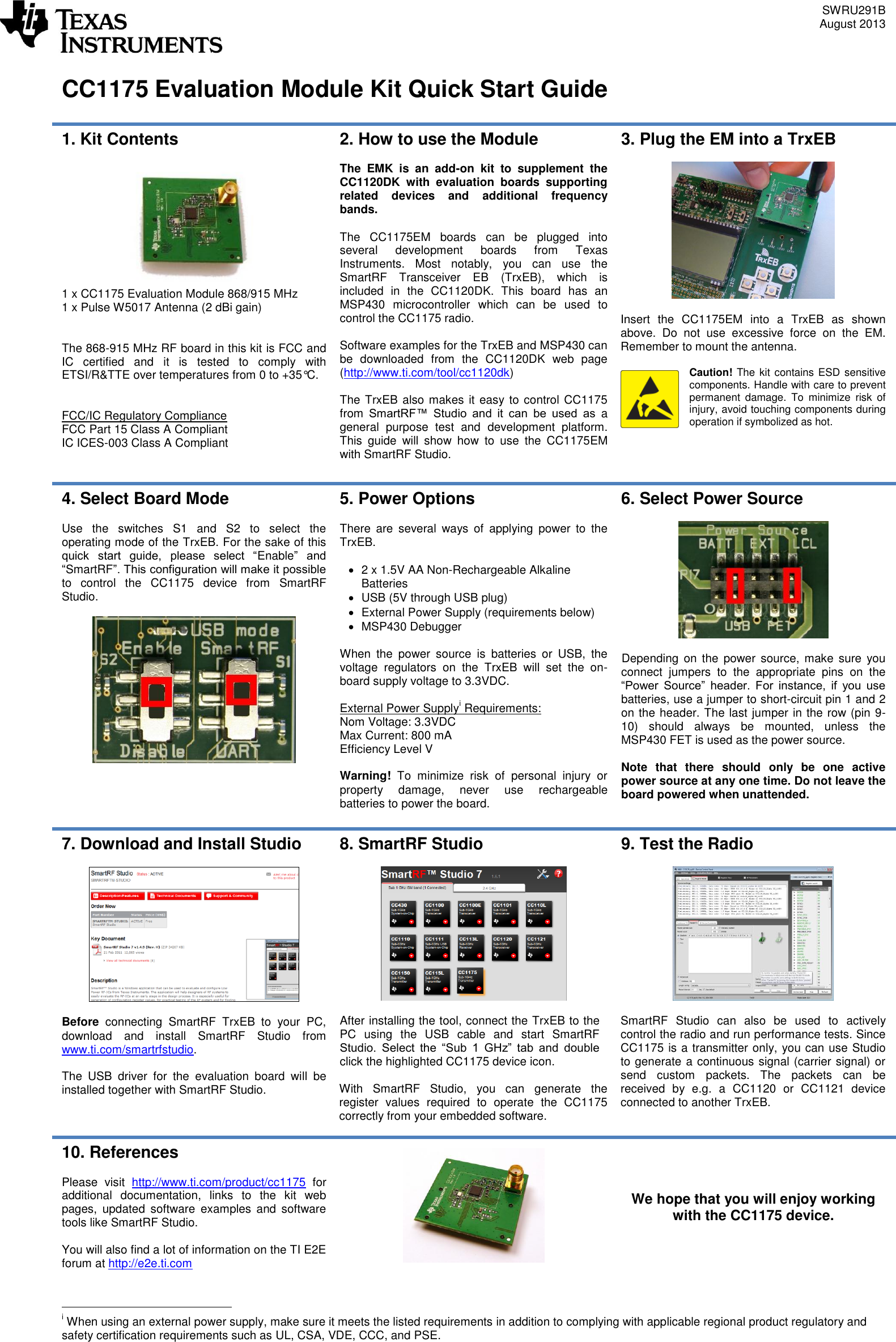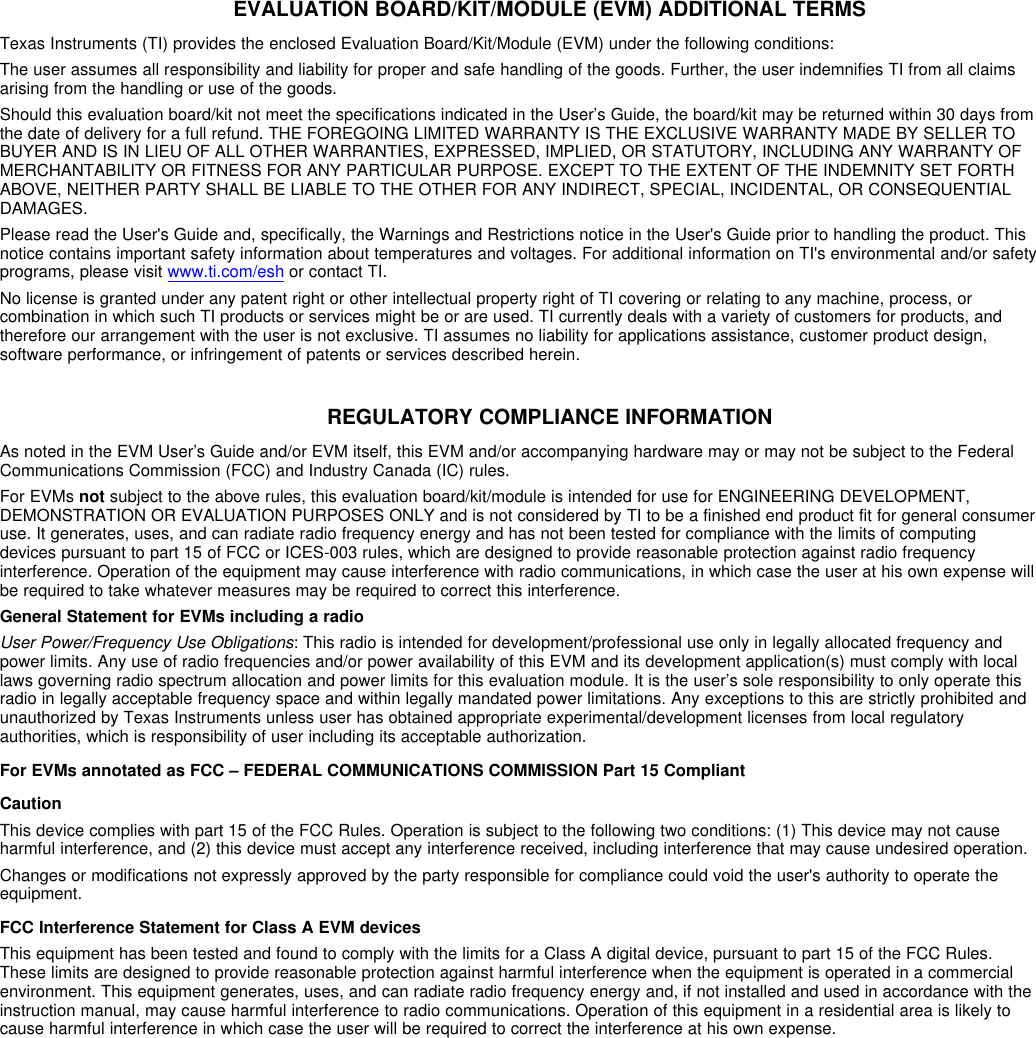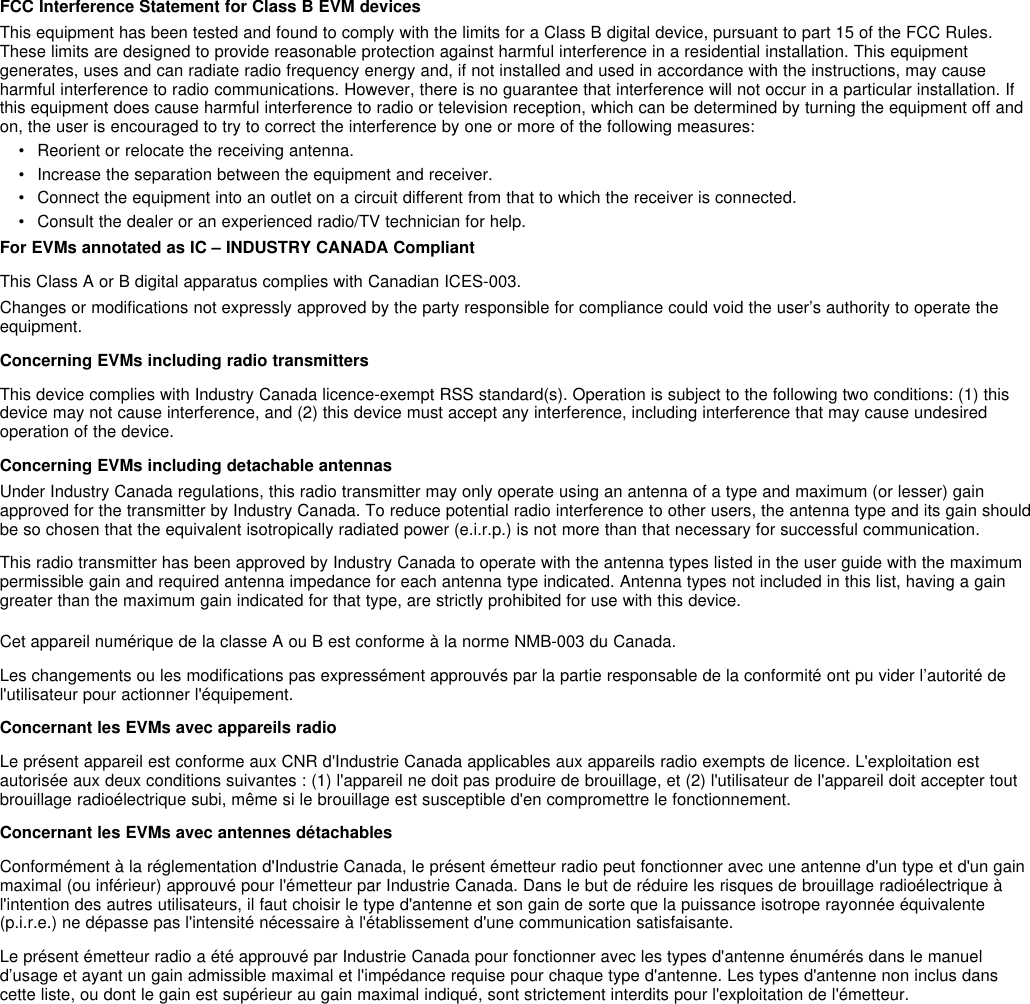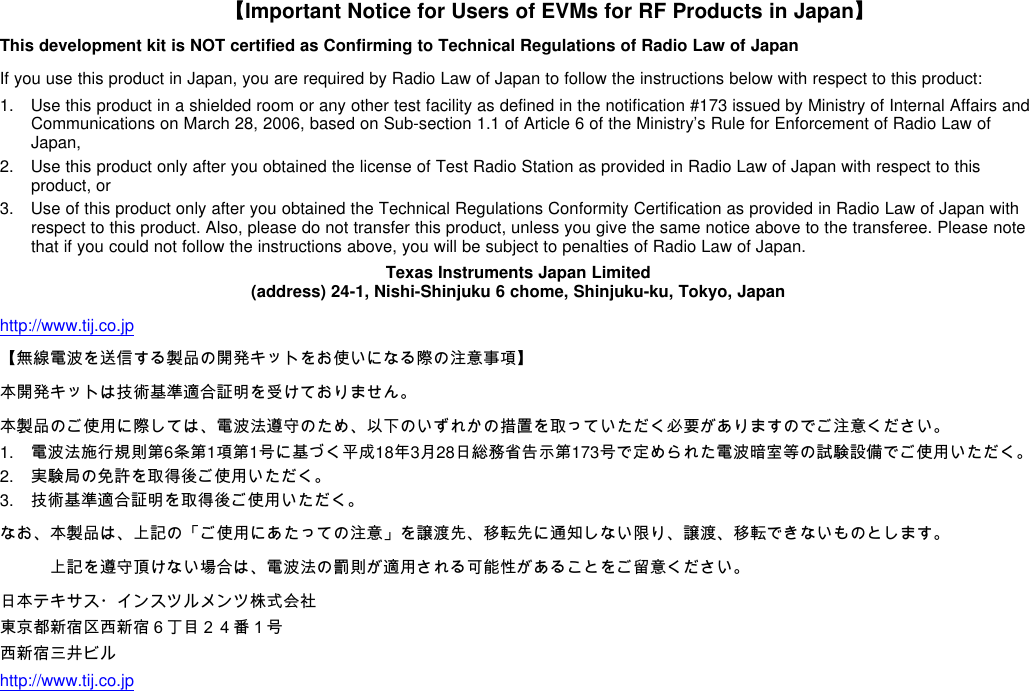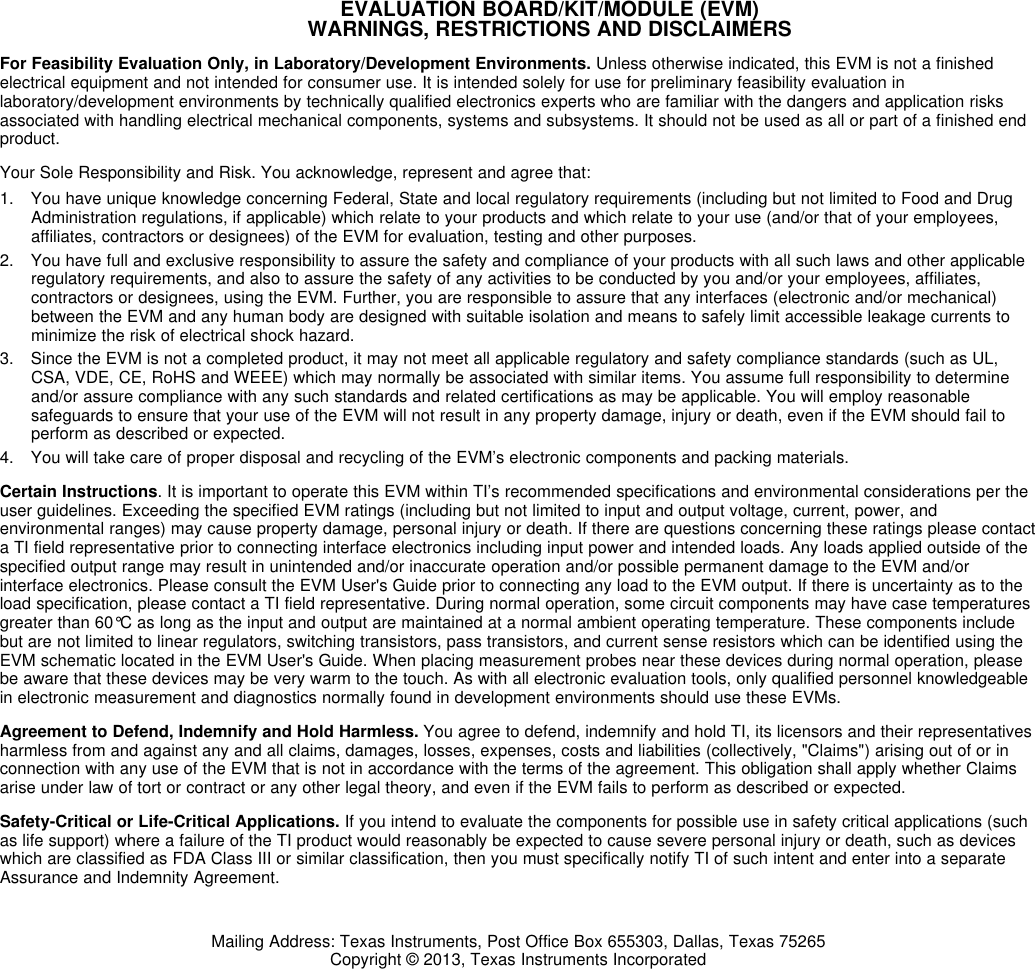Texas Instruments 1175EM900 The CC1175EM-868-915 is a development tool for Texas Instruments sub-1 GHz CC1175 chip. User Manual EVALUATION BOARD KIT MODULE EVM ADDITIONAL TERMS
Texas Instruments Inc. The CC1175EM-868-915 is a development tool for Texas Instruments sub-1 GHz CC1175 chip. EVALUATION BOARD KIT MODULE EVM ADDITIONAL TERMS
User manual
